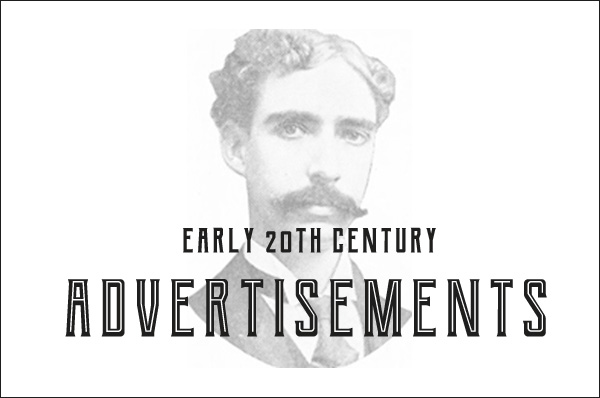It’s 1906; the magazine is Pacific Monthly.
Are you in the market for something that's auto-impregnating with a heavy specific gravity? Tired of oils that have lighter, vague gravity?
They’re still around, proving the tagline about time’s powerlessness. They have spooky ghost horses as their logo, too.

They've been saying this for a long time. It was probably true for a while.
This almost unreadably dense site says:
The first through passenger train on the new railroad started out from Salt Lake City for Los Angeles on February 9, 1905, carrying, among others, Senator Clark. The Salt Lake Route was equipped with a stable of modern standard gauge steam locomotives, most equipped with partly cylindrical Vanderbilt tenders, and the latest of passenger cars. It soon had a premiere train, The Los Angeles Limited, which would remain the most prestigious, Pullman-sleeping-car-equipped train on the railroad.
Whereas most of the line’s passenger trains stopped for the passengers to have meals at stations such as Kelso, Las Vegas, Caliente, and Milford, The Los Angeles Limited had its own dining car and did not need to make meal stops. It was not until the mid-1930s brought new technology of locomotives powered by Winton and later diesel-electric engines pulling new “lightweight” streamlined passenger cars that a still newer train, the Armour yellow City of Los Angeles eclipsed the Limited as the principal train on the line.
Along the way, outposts of civilization:
The railway also maintained a substantial presence in the remote town of Kelso, California. Nearly the entire route of the railroad traversed rugged and largely unpopulated desert terrain. There were no major population centers between the railroad's endpoints until the city of Las Vegas began its rapid growth in the mid-twentieth century.
The LA&SL was known for its depot buildings, many of which were imposing structures in the Mission Revival architectural style.
There’s no Kelso anymore. But there was, once.
But there was, once.
The depot building itself was built in 1923 using a Spanish "California mission" building style. It contained boarding rooms for railroad employees and a restaurant for both employees and passengers. It also had a telegraph office and waiting room. Later, a restaurant nicknamed the "Beanery" that served home-style meals was housed in the building. The large rooms in the basement also served as a community center for local residents.
About 1944 the railroad brought in an old strap-iron jail to detain local drunks.
It’s been restored! Take a look at this: how the dining counter looked in the olden times.

A lovely ornate ad, the smallest part of which is the thing they're selling:
This page has a color shot of their logo; it names Mr. Hicks as President, and W. H. Chatten as "Secretary." Probably not in stenographic sense. Most of the references from Google call him a Veep.

I'm guessing he mostly appealed to the five-dollar crowd:
Sounds great! Why, you can double five dollars in one year - that would be, what, ten? Ten! Surely it's safe bet with no dodgy speculation involved.

Dashing young moderns:
The artist: MASSENGALE? No, I don't think so. That was the name of the agency that had handled the account since 1895. In 1906 Coke bumped them for another company.
Imagine living your rest of your life as the guy who lost the Coke account.

I'm not saying the quantity of consumer goods was scant in 1906 compared to today, but:
I wonder if there was any particular brand loyality for a bookmark.

Mapleine! Why don't you be true?
Mapleine Syrup! It makes . . . Mapleine Syrup!

Hmmm . . . my folder says 1906. And yet:
Strop no more, friends. That's King Gillette in the picture, of course - his visage was as familiar to men of the day as the President's.
Anyway, 1904 was the year he introduced his safety razor, so the ad's referencing an epochal moment in shaving history: the Parting of the Ways. And we've all bled a little less ever since. |













